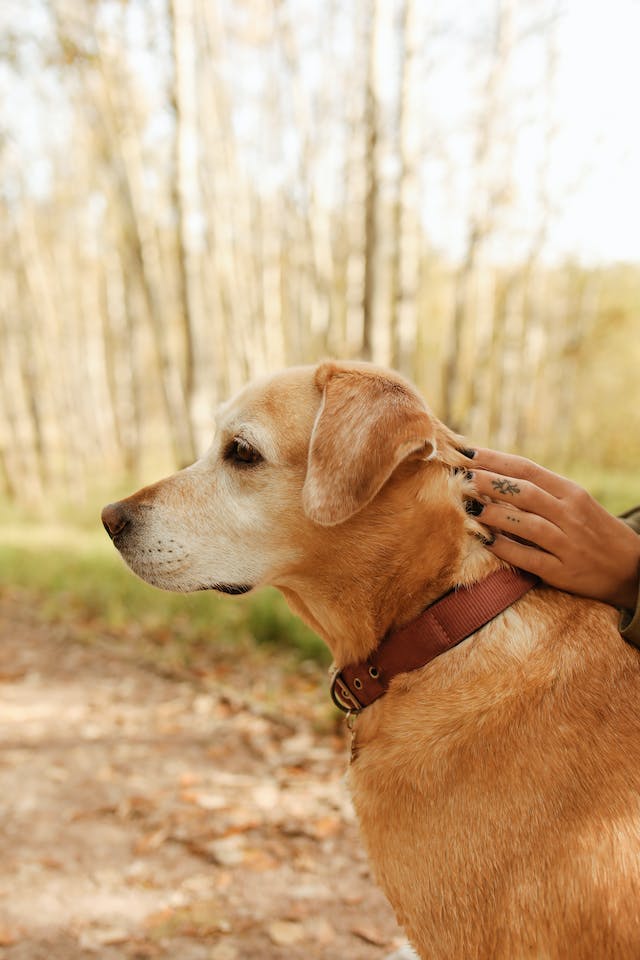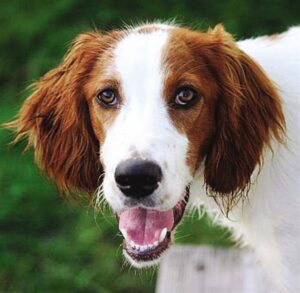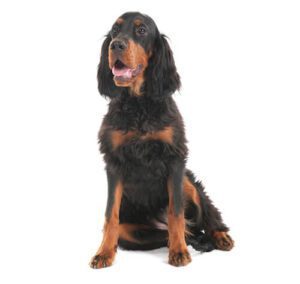
Golden Years Glow: Promoting Your Senior Rescue Dog’s Well-Being
Watching your senior rescue dog enter their golden years can be bittersweet. They may move a little slower and their muzzle may have grayed, but their eyes still sparkle with love and loyalty. It’s our duty to make these years as comfortable and joyful as possible. With the right care and a dash of patience, we can ensure our furry friends enjoy their twilight years to the fullest.
Article-at-a-Glance: Key Insights
-
Understand the unique health needs of senior rescue dogs to provide the best care.
-
Identify age-related changes and how they impact your dog’s daily life.
-
Learn how to adjust your dog’s diet to support their health as they age.
-
Discover supplements that can enhance joint and organ function in older dogs.
-
Recognize the importance of addressing both physical and emotional needs.
Understanding Senior Rescue Dog Health Dynamics
Senior rescue dogs have a special place in our hearts, and they come with unique health dynamics. As they age, their bodies and behaviors change, and they may face health challenges they didn’t have in their younger years. It’s crucial to stay observant and proactive to keep them comfortable and healthy.
Identifying Age-Related Changes
Just like humans, dogs experience a range of changes as they grow older. Their metabolism slows down, their hearing may not be as sharp, and their vision could start to fade. You might notice they’re taking longer naps or aren’t as eager to leap up for a walk. These are natural parts of aging, and being aware of them helps you adapt their environment and routine to their needs.
-
Decreased mobility and joint stiffness
-
Changes in sleep patterns
-
Weight gain or loss
-
Diminished senses of hearing and sight
-
Less tolerance for physical activity
By spotting these signs early, you can work with your vet to manage any health issues and keep your dog as active and engaged as possible.
Addressing Past Trauma and Neglect
Rescue dogs often come with a history that’s not fully known to us. They may have experienced neglect or trauma that can affect their health as they age. It’s important to be sensitive to these past experiences, as they can manifest in both physical and emotional ways. A calm and stable environment, regular routines, and lots of gentle affection can work wonders for a senior dog’s well-being.
Remember, patience is key. Your dog might need more time to adjust to new situations or may become more anxious or clingy. Provide them with a safe space, like a cozy bed or a quiet room, where they can retreat if they feel overwhelmed.
Consult with a behaviorist if you notice any concerning changes in their behavior. They can offer strategies to help your dog feel more secure and content in their senior years.
Decoding Diet: Nutrition for the Aging Canine
The right nutrition can make a world of difference in managing your senior dog’s health. As they age, their dietary needs evolve, and it’s crucial to adapt their meals to support their changing bodies. A balanced diet that’s rich in essential nutrients will help maintain their energy levels and keep their organs functioning properly.
Choosing the Right Food for Senior Dogs
When it comes to feeding your senior dog, quality is key. Look for foods that are specifically formulated for older dogs. These foods typically have higher fiber content for digestive health, adjusted protein levels to maintain muscle mass, and fewer calories to prevent obesity.
Here’s what to keep in mind:
-
Opt for easily digestible proteins and carbohydrates.
-
Ensure the food has a balanced ratio of omega-3 and omega-6 fatty acids for skin and coat health.
-
Check for added vitamins and minerals that support cognitive function and immune health.
-
Consider foods with glucosamine and chondroitin for joint support.
Always consult your vet before making any changes to your dog’s diet. They can provide personalized advice based on your dog’s health status and nutritional needs.
Supplements to Support Aging Joints and Organs
Alongside a balanced diet, supplements can play a significant role in supporting your senior dog’s joint health and organ function. They can fill in the nutritional gaps and offer targeted support for common age-related issues.
Consider these supplements:
-
Glucosamine and chondroitin for joint health
-
Omega-3 fatty acids for cognitive function and inflammation reduction
-
Probiotics for gut health and digestion
-
Antioxidants like vitamins E and C to combat free radicals
-
Milk thistle for liver support
Before starting any new supplement, have a chat with your vet. They can help you choose the right products and the correct dosages for your dog’s specific needs.
Maintaining Mobility: Exercise Tailored for Older Dogs
Keeping your senior dog moving is vital for their overall health and happiness. While they may not have the same pep in their step as they once did, regular, gentle exercise helps maintain muscle tone, improves circulation, and can boost mental well-being. It’s all about finding the right type and amount of activity to match their current fitness level and mobility.
Low-Impact Activities for Joint Health
Low-impact exercises are the way to go for older dogs. These activities put less stress on the joints, which is especially important for dogs with arthritis or other joint issues. Think of it as a gentle workout that gets the heart pumping without overdoing it.
-
Leisurely walks on soft surfaces like grass or sand
-
Swimming or hydrotherapy, which allows for movement with minimal joint strain
-
Gentle play sessions with soft toys
-
Short, frequent walks rather than long treks
-
Balance exercises, like standing on a wobble board
Always watch your dog’s body language during exercise. If they seem tired or uncomfortable, it’s time to take a break. And remember, consistency is more beneficial than intensity.
Adaptive Equipment to Aid Movement
As dogs age, they might need a little extra help getting around. That’s where adaptive equipment comes in handy. These tools are designed to support your dog’s mobility and independence, making it easier for them to continue enjoying life.
-
Harnesses with handles to assist with walking and stair climbing
-
Orthopedic beds to provide joint support and comfort
-
Ramps or steps to help your dog get in and out of the car or onto furniture
-
Wheelchairs for dogs with significant mobility loss
-
Non-slip mats or socks to prevent falls on slippery floors
Work with your vet or a pet rehabilitation specialist to determine which equipment will benefit your dog the most. They can also guide you on how to properly use these aids to ensure your dog’s safety and comfort.
On the Clock: Scheduling Regular Check-Ups
Regular veterinary check-ups are crucial for keeping tabs on your senior dog’s health. As they age, the risk of health issues increases, and early detection is key to managing or even preventing certain conditions. Aim for at least two wellness exams per year, though more frequent visits may be necessary based on your dog’s specific health needs.
Navigating Veterinary Visits
Visiting the vet can be stressful for your senior dog, so it’s important to make the experience as positive as possible. Schedule appointments during quieter times, bring their favorite blanket or toy for comfort, and be there to soothe them with gentle words and pets.
-
Keep a log of any changes in behavior or health to discuss with your vet.
-
Ask about special accommodations for senior pets if your clinic offers them.
-
Consider mobile vet services for in-home care to reduce stress.
Remember, you know your dog best. If you notice anything out of the ordinary between scheduled visits, don’t hesitate to contact your vet.
Understanding Senior Dog Blood Work and Tests
Blood work and other diagnostic tests are invaluable tools for monitoring your senior dog’s health. These tests provide a window into how well their organs are functioning and can help catch diseases like kidney failure or diabetes early on.
Common tests for senior dogs include:
-
Complete blood count (CBC) to check for anemia or infection
-
Biochemistry profile to assess organ function
-
Thyroid tests to detect hypo- or hyperthyroidism
-
Urinalysis to evaluate kidney function and check for infection or diabetes
Discuss with your vet which tests are appropriate for your dog’s age and health status. Understanding these results can help you make informed decisions about their care.
Caring for the Mind: Managing Cognitive Decline
Just like their bodies, the minds of senior dogs can show signs of aging. Cognitive decline can affect their memory, learning, perception, and awareness. It’s important to recognize these signs early to manage them effectively and maintain your dog’s quality of life.
Recognizing Signs of Canine Cognitive Dysfunction
Canine cognitive dysfunction (CCD) is akin to dementia in humans and can manifest in various ways. Keep an eye out for changes such as disorientation, altered sleep patterns, reduced interaction with family members, and house soiling. These signs can be subtle at first, so it’s crucial to monitor your dog’s behavior closely.
-
Confusion or disorientation in familiar environments
-
Changes in social interactions, such as withdrawal or irritability
-
Altered sleep-wake cycles, including restlessness at night
-
Loss of previously learned training, such as housebreaking
If you notice any of these symptoms, talk to your vet. There are treatments and strategies that can help manage CCD and improve your dog’s cognitive health.
Enrichment Games and Activities
Keeping your senior dog’s mind sharp is as important as caring for their physical health. Enrichment activities can help maintain their cognitive functions and prevent boredom. Simple games like hide-and-seek with their favorite toys or treat-dispensing puzzles can provide mental stimulation and a sense of purpose.
-
Teach them new, simple tricks to engage their brain.
-
Use scent games where they have to find hidden treats.
-
Provide chew toys that promote dental health and relieve boredom.
-
Introduce interactive toys that move unpredictably to capture their attention.
-
Encourage gentle play with other pets or family members to keep them socially engaged.
Remember to tailor activities to your dog’s mobility and energy levels. The goal is to stimulate, not overwhelm, your senior companion.
The Comforts of Home: Creating a Senior-Friendly Environment
As your dog ages, their home environment should evolve to suit their changing needs. Small adjustments can make a significant difference in their comfort and mobility, helping them navigate their space safely and confidently.
Accessibility Modifications Indoors
Inside the house, consider creating a living space that minimizes the risk of injury and maximizes comfort. This might mean rearranging furniture to create clear pathways, providing ramps or stairs to access favorite spots, or laying down non-slip rugs to prevent slips and falls.
-
Place their bed in a warm, draft-free area with easy access to food and water.
-
Install baby gates to prevent access to dangerous areas like stairs.
-
Consider an orthopedic bed to support their joints and make resting more comfortable.
-
Elevate food and water bowls to reduce strain on their neck and back.
These simple changes can help your senior dog stay comfortable and independent in their familiar surroundings.
Outdoor Adaptations for Ease of Access
Outdoor spaces should also be senior dog-friendly. If you have a yard, ensure it’s securely fenced and free from hazards that could cause injury. A comfortable, shaded area is important for rest on sunny days, and a stable, gently sloping ramp can replace steps to the patio or deck.
-
Keep walkways clear and level to prevent tripping.
-
Provide a soft, grassy area for lying down and playing.
-
Ensure outdoor beds or resting spots are protected from the elements.
-
Consider a doggie door with easy access to the yard for bathroom breaks.
With these outdoor modifications, your senior dog can enjoy the fresh air and sunshine while staying safe and comfortable.
From Pills to Pain Management: Medicating Your Mature Mutt
Managing your senior dog’s medication is a critical part of their health care routine. As they age, they may require medication for chronic conditions or pain management. It’s important to administer these medications correctly to ensure they are effective and to avoid any potential side effects.
Administering Medications Properly
Always follow your vet’s instructions when giving your dog medication. If pills are challenging to administer, try hiding them in a small amount of food or a special treat. Pill pockets are also a handy option designed to make medication time stress-free.
-
Keep a medication schedule to avoid missed or double doses.
-
Use a pill organizer to keep track of multiple medications.
-
Monitor your dog for any adverse reactions after administering medication.
-
Consult your vet if you’re having trouble with medication administration.
Proper medication management can significantly improve your senior dog’s quality of life, so it’s worth getting it right.
Pain Relief Options for Senior Dogs
Chronic pain is a common issue for aging dogs, but there are many strategies to help manage it. Your vet may prescribe pain relief medications, but there are also non-pharmaceutical options like acupuncture, massage, or physical therapy that can provide relief.
-
Consider supplements like glucosamine for joint health.
-
Warm compresses can soothe sore muscles and joints.
-
Therapeutic beds provide extra cushioning and can help alleviate pain.
-
Gentle exercise can help maintain mobility and reduce discomfort.
Always consult with your vet to create a pain management plan that’s tailored to your dog’s specific needs.
The Finer Points of Fur Care: Grooming and Skin Health
Grooming is more than just keeping your senior dog looking good—it’s an essential part of their health care. Regular grooming can prevent skin infections, help manage shedding, and provide an opportunity to check for lumps, bumps, or other changes in their skin or coat.
-
Brush your dog regularly to remove dead hair and prevent mats.
-
Use a gentle, moisturizing shampoo to protect their skin during baths.
-
Trim nails regularly to prevent overgrowth that can affect their gait.
-
Check their ears for signs of infection and keep them clean.
-
Pay special attention to the fur around their rear end to maintain hygiene.
Keeping up with your senior dog’s grooming not only keeps them comfortable but also allows you to spot potential health issues before they become serious problems.
Bathing and Brushing Best Practices
Bathing and brushing are key components of your senior dog’s grooming routine. However, as they age, their skin becomes more sensitive, and their coat may not be as robust as it once was. Use a gentle, dog-specific shampoo and lukewarm water to avoid drying out their skin. Bathing too often can strip natural oils, so aim for a schedule that keeps them clean without causing irritation.
-
Brush your dog before bathing to remove loose fur and detangle.
-
Support them during baths to prevent slipping and stress.
-
Thoroughly rinse off shampoo to avoid residue that can cause itching.
-
Gently pat them dry with a towel, and if using a blow dryer, set it on a cool, low setting.
Regular brushing sessions not only help to distribute natural oils throughout their coat but also provide a chance for you to bond with your dog and check for any abnormalities on their skin.
Managing Common Skin Issues in Older Dogs
Senior dogs often encounter skin issues like dryness, thinning fur, or even infections. Keeping an eye out for any redness, flaking, or bald patches is important for early detection and treatment. A balanced diet with the right nutrients can promote healthy skin and fur, while regular vet check-ups can help diagnose and treat any skin conditions early on.
-
Moisturize their skin with vet-approved products if needed.
-
Look for signs of parasites, such as fleas or ticks, during grooming.
-
Keep their bedding clean to prevent bacterial or fungal growth.
-
Consult your vet if you notice persistent scratching or skin changes.
Remember, some skin issues can be symptomatic of underlying health problems, so it’s essential to take any changes seriously and seek veterinary advice.
Dental Hygiene: A Bite Out of Senior Health Issues
Good dental hygiene is crucial for your senior dog’s overall health. Dental issues can lead to more serious health problems, including heart, liver, and kidney disease. Regular teeth cleaning and providing dental treats can help reduce plaque and tartar build-up, keeping their mouth healthy and their breath fresh.
Routine Teeth Cleaning and Dental Treats
Brushing your dog’s teeth might seem daunting, but with patience and the right approach, it can become a part of your daily routine. Use a toothbrush designed for dogs and toothpaste that’s safe for them to ingest. Dental treats and toys designed to clean teeth can supplement your brushing routine, but they should not replace it.
-
Start slowly, letting your dog get used to the taste of the toothpaste and the sensation of the brush.
-
Brush in a circular motion, focusing on the gumline where plaque tends to accumulate.
-
Offer dental chews that are appropriate for their size and chewing strength.
-
Regularly inspect your dog’s mouth for signs of dental issues.
Consistency is key, so try to make dental care a part of your dog’s daily schedule.
Signs of Dental Diseases and Prevention
Dental disease can be painful and may lead to serious complications if left untreated. Watch for signs like bad breath, difficulty eating, red or swollen gums, and loose or missing teeth. Regular veterinary check-ups, including dental exams, are vital for early detection and prevention of dental diseases.
-
Professional dental cleanings by your vet can prevent periodontal disease.
-
Provide safe, durable chew toys that encourage natural teeth cleaning.
-
Stay alert to changes in chewing habits or drooling, which can indicate dental discomfort.
-
Discuss with your vet about sealants or other preventive treatments.
Preventive care, combined with home dental hygiene, can significantly reduce the risk of dental disease in your senior dog.
Wrapping Up: A Comfortable and Caring Approach to Senior Dog Health
As we conclude, remember that managing the health of your senior rescue dog is about providing comfort, care, and lots of love. Their golden years can be some of the best times you’ll share together, and with the right approach to nutrition, exercise, and medical care, you can help ensure those years are as happy and healthy as possible.
Stay attentive to their needs, adapt as necessary, and never underestimate the power of a gentle touch and a kind word. Your senior rescue dog has given you their best years, and now it’s your turn to give them theirs. Embrace every moment, cherish the memories, and enjoy the journey together.
Frequently Asked Questions
How often should I take my senior rescue dog to the vet?
Regular veterinary care is essential for senior dogs. At a minimum, schedule wellness check-ups twice a year. However, depending on their health and any ongoing conditions, your vet may recommend more frequent visits. Always consult your vet if you notice any new or concerning symptoms between regular visits.
-
Bi-annual check-ups for overall health assessments.
-
Regular blood work to monitor organ function and detect diseases early.
-
Dental exams to prevent and treat dental issues.
-
Consultations for any changes in behavior or physical condition.
Staying proactive with veterinary care can help you catch potential health issues early, ensuring your senior dog remains comfortable and content.
What are the signs my senior dog may need special nutritional adjustments?
As your dog ages, their nutritional needs can change, and it’s crucial to recognize the signs that may indicate it’s time to adjust their diet. Keep an eye out for weight changes, lack of appetite, or digestive issues like constipation or diarrhea. A dull, dry coat or lackluster energy levels can also signal nutritional deficiencies or the need for dietary changes.
-
Unexpected weight gain or loss
-
Decreased interest in food or difficulty eating
-
Changes in bowel movements or digestion
-
Dry or flaky skin, dull coat
-
Less energy and enthusiasm for activities
If you notice any of these signs, consult with your vet. They can help you determine if a dietary adjustment or a specialized senior diet is necessary for your dog’s health.
Are there specific exercises that are harmful to older dogs?
Yes, there are certain exercises that can be too strenuous for senior dogs, especially if they have underlying health issues like arthritis or heart problems. High-impact activities such as jumping, running on hard surfaces, or intense agility training can exacerbate joint pain and lead to injuries. Instead, focus on gentle, low-impact exercises that keep them active without putting too much stress on their bodies.
-
Avoid repetitive jumping or high-impact play
-
Steer clear of running on hard surfaces like concrete
-
Skip activities that require sharp turns and sudden stops
-
Limit play sessions to a comfortable duration
Always consult your vet before starting a new exercise regimen and monitor your dog’s response to physical activity closely.
What can I do at home to help manage my dog’s arthritis pain?
Arthritis is a common issue in senior dogs, but there are several things you can do at home to help manage their discomfort. Providing a warm, comfortable place to rest can alleviate joint pain. Gentle massage and stretching can improve circulation and flexibility. Non-slip flooring can prevent falls that might worsen their condition. Additionally, consider weight management through diet and exercise to reduce the strain on their joints.
-
Provide a supportive orthopedic bed
-
Use gentle massage techniques to soothe sore joints
-
Keep your home warm to ease stiffness
-
Install ramps or stairs to help them navigate without jumping
-
Maintain a healthy weight to lessen joint pressure
Work with your vet to find the best combination of at-home care and medical treatment for your dog’s arthritis.
How do I know if my senior dog is experiencing cognitive decline?
Recognizing cognitive decline in your senior dog involves observing changes in their behavior and mental functions. Signs of cognitive dysfunction may include disorientation, confusion in familiar places, changes in sleep patterns, decreased interest in play or interaction, and lapses in house training. If you notice these behaviors, it’s important to consult your vet for an assessment and discuss possible interventions.
-
Appearing lost or confused in known environments
-
Altered interactions with family members or other pets
-
Disturbed sleep cycles, especially restlessness at night
-
Decreased responsiveness to commands or cues
-
Accidents in the house from a previously house-trained dog
Early detection and management of cognitive decline can help maintain your dog’s quality of life, so stay vigilant and proactive in their care.
As we wrap up this guide on senior rescue dog health management, remember that your aging companion relies on you for comfort and care. By staying informed and attentive to their needs, you can ensure their golden years are filled with love and contentment. Keep their diet nutritious, their bodies gently active, and their minds engaged. Provide regular veterinary care, a cozy home environment, and plenty of affection. Most importantly, cherish every moment you have with your loyal friend. They may be older, but their capacity for love is timeless.
Love, patience, and a little know-how can make all the difference in your senior dog’s life. So, embrace the journey of caring for your aging companion—it’s a rewarding experience that strengthens the bond you share. Here’s to many more happy, healthy years with your beloved senior rescue dog!


